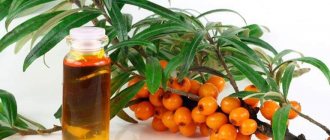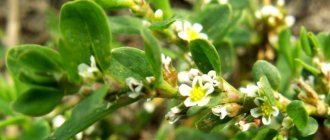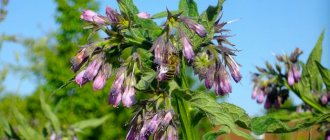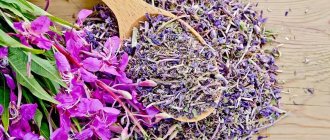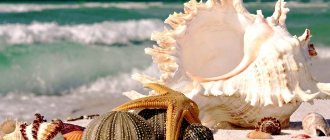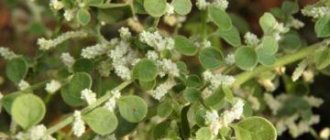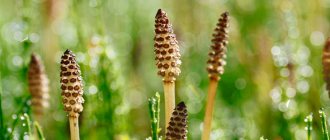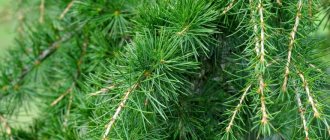Recently, natural oils have become increasingly popular. Many of them have healing qualities and are used to treat certain pathologies. Turpentine oil is considered one of the most useful. Its use for neuralgia and diseases of the musculoskeletal system shows good results. To many, this remedy is better known as “turpentine.” This product of processing pine resin has long been used in folk medicine. Knowing what properties this oil has, you can use it to treat many diseases.
Pharmacodynamics and pharmacokinetics
This medicine is a product of plant origin, namely an essential oil obtained by distillation and further purification of the resin (turpentine) of Scots pine and is a mobile colorless liquid with a pungent taste and a specific odor. The liquid is insoluble in water, but is capable of dissolving in 12 parts of alcohol, and is also miscible in all proportions with benzene, chloroform and ether.
The main active ingredient in turpentine, alpha-pinene, easily passes through the epidermis and has an irritating effect on sensitive nerve endings. Biological endogenous substances released due to the effects of the oil also have a medicinal effect. For example, inflammatory mediators, such as histamine and the like, contribute to some tissue swelling, vasodilation, and the formation of hyperemia, and endorphins and endorphins contribute to the pain-relieving effectiveness of the drug.
The distracting effect of turpentine when used topically, which produces an analgesic effect, is explained by the entry of two excitatory currents into the central nervous system. Where the impulse transmitted from the skin irritated by the drug prevails over the impulse from pathological areas of the human body, thereby weakening the perception of afferent transmission. In addition, a trophic effect is observed according to the principle of the cutaneous-visceral reflex (in the case of an influence on the Zakharyin-Ged zones), as well as according to the principle of the axon reflex (carrying out antidromic (reverse) excitation).
The inhalation route of administration of turpentine oil leads to reflex stimulation of cough, with parallel mucolytic and expectorant effects.
Beneficial features
The widespread use of purified turpentine oil in folk medicine is explained by its healing properties. It has an antiseptic, analgesic and anti-inflammatory effect. Penetrating through the skin, its main component irritates the nerve endings. This action helps reduce pain in muscles and joints.
Under the influence of oil, biologically active substances begin to be produced. They cause vasodilation and activate blood circulation, which causes redness of the skin and slight swelling. The oil also stimulates the production of endorphins and enkephalins, which provide an analgesic effect.
In addition, it has a hemostatic effect and accelerates the healing of superficial wounds. When used internally, turpentine oil has an antibacterial and antiparasitic effect, improves the functioning of the gastrointestinal tract, stimulating its motility. If you inhale it, it activates the bronchi, producing an expectorant effect.
Turpentine oil, instructions for use
Application in official medicine
Basically, turpentine oil is indicated for external (local) use in the form of rubbing. A certain amount of oil, depending on the course and severity of a particular painful condition, is applied to the skin in the area of problem areas and rubbed in with gentle circular movements.
It is also possible to use an oil solution for inhalations prescribed in case of diseases of the pulmonary system, where the percentage of the drug and the frequency of procedures are prescribed by the attending physician.
Use in folk medicine
There are many traditional medicine recipes based on the use of resin (pine resin), which are not included in the officially approved instructions.
Below are some of the most popular methods and techniques for its use.
For burns, a mixture is prepared in a 1:1:1 ratio of resin, sea buckthorn oil and lard, which is soaked into a gauze bandage. For 3 days, a bandage is applied to the burn site for 60 minutes 3-4 times a day.
For ulcerative lesions of the gastrointestinal tract, it is recommended to prepare an alcohol infusion from 50 g of crushed resin and 500 ml of 40% alcohol (vodka). Leave for 7 days, then apply 1 tablespoon (15 ml) orally 60 minutes before meals three times every 24 hours.
In case of manifestations of sore throat, dissolve 1/3 teaspoon of pure resin after eating.
For sinusitis and sinusitis, mix equal parts of vegetable oil and resin. The prepared mixture in the amount of 2-3 drops should be instilled into the nose before going to bed.
For arrhythmia and tachycardia, the prepared oil solution can be rubbed into the heart area, and drops can also be taken internally. The duration of such preventive treatment is 30 days.
For periodontal disease, mix oleoresin and fine salt (1:3) with the addition of castor or olive oil (until a sour cream-like formation), and then rub it into the inflamed gums several times every 24 hours.
For herpes, apply an oil-soaked tampon to the developing ulcer for 20-25 minutes several times a day.
For mastopathy, warm oil compresses are used.
Also very popular are baths with resin, which are recommended to be taken for the purpose of general strengthening of the body, normalization of sleep, skin rejuvenation, improvement of hair quality, etc.
These and many other methods of using pine resin have been known for quite a long time and indeed often give a positive therapeutic result, but in the case of serious diseases they are unlikely to replace traditional therapy.
Contraindications
The use of turpentine is contraindicated for:
- Individual sensitivity to ingredients
- Inflammation or damage to the skin at the treatment site
- Pregnancy and breastfeeding.
Under no circumstances should the product be taken orally: a dose exceeding 4 grams can cause death.
Zalmanov baths are contraindicated for:
- Allergies to turpentine
- Hypertension
- Disturbances in cardiac activity
- Heart failure
- Inflammatory dermatological diseases during relapse
- Exacerbations of chronic pathologies
- Tuberculosis
- Chronic nephritis
- Liver cirrhosis and hepatitis
- Open injuries
- Drug and alcohol intoxication
- Second and third trimester of pregnancy.
Analogs
Mirrolla LLC, Russia. Price
from 140 to 200 rub.
Release form: a bottle of white emulsion in individual packaging. Volume 250 ml. It is recommended to take baths with the addition of the emulsion, strictly following the dosages specified in the instructions.
pros
- Promotes deep cleansing of the skin
- Slows down the aging process
Minuses
- To obtain the effect, it must be used for a long time
- Not a very pleasant smell.
Biofarmus, Russia Price
from 350 to 450 rub.
The turpentine solution is yellow. Release form: a bottle with a yellow emulsion based on turpentine, volume 500 ml, individual packaging. Ingredients: gum turpentine, camphor, castor oil, salicylic acid, chamomile extract, sage extract, string extract, water. Taking a bath with Skipar normalizes high blood pressure, tones, and promotes cleansing of toxins.
pros
- Can be used as a weight loss product
- Effective remedy for colds
Minuses
- Unpleasant smell
- Contraindicated for people suffering from hypotension.
Moscow Pharmaceutical Factory CJSC, Russia, etc. Price
from 50 to 80 rub.
Release form: homogeneous white ointment with a specific odor in a tube, volume 30g, individual packaging. Ingredients: turpentine oil, water, petroleum jelly. Used for neuralgia, rheumatism, arthritis, severe cough.
pros
- Cheap remedy
- An effective product - easily penetrates the epidermis and begins to act
Minuses
- Very strong smell
- An allergic reaction may occur.
Joint diseases are becoming increasingly common and are beginning to affect more and more ages. There are many reasons for this, which can be grouped under the category “our way of life.” Treatment of arthritis is varied: medications, diets, leeches, physiotherapy, surgery. There are also well-proven folk remedies. In this article we will look at the treatment of joints with turpentine.
The main ingredient of turpentine is a white-yellow essential oil produced from the wood and resin of coniferous trees. Gum turpentine is rated highest.
Turpentine established itself as a treatment for joints in the 19th century. Its anti-inflammatory, analgesic, and therapeutic effects are described in the “People's Book” of 1868. Compresses, various lotions and poultices were made from resin.
The beginning of the 20th century was marked by the invention of A.S. Zalmanov water-soluble turpentine. It was white in color and was used to add to the baths of the sick. The rubbing ointment could also be made from yellow resin.
The same doctor proved the therapeutic effect of oleoresin on the central nervous system, osteochondral tissue, skin, and muscles. Joint pain during the course noticeably decreases after just a week of treatment. Mobility returns.
Turpentine for treating joints
Before treating joints with turpentine oil, the presence of an allergic reaction is checked: for this, an area of skin on the fold is lubricated. If there are no negative sensations, you can start rubbing and bathing.
Joints should be treated with turpentine oil with caution; first, the body is allowed to get used to the action of the substance. To do this, the concentration of resin in the water at first is 10-15 ml per 250 liters of water
Over time, it can reach up to 65 ml.
The effect of essential oil rather plays the role of an amplifier of the effect of medications prescribed by a doctor. This combination provides a kind of double blow to the disease: from the inside and from the outside.
Turpentine baths for joints
To prepare the emulsion you need:
- turpentine oil;
- camphor alcohol;
- liter jar;
- 1.5 liter plastic bottle.
Mix 1.5 cups of resin and 2 tablespoons of camphor in a plastic bottle. The mixture should turn white. Then water is added so that the volume becomes 1 liter. The bottle is shaken vigorously. The entire mixture is poured into a glass jar.
Application:
- Run a bath.
- Shake the resulting emulsion, and then measure out 7-10 ml (add 1-2 ml each time, depending on how you feel).
- The solution is poured into a bath, the water temperature of which should be 37 degrees, then mixed.
- Water procedures take 10-15 minutes, the face is covered with a towel.
- If you feel a burning sensation, get out of the bath immediately.
- If you feel adequate, the water temperature can be increased to 39 degrees. For the next time, a gradual increase in temperature to 40-42 degrees is acceptable.
- When completing the water procedures, rinse off the solution, dry yourself and lie down under a warm blanket. It is advisable to wear socks on your feet. This way, a greater warming effect is achieved.
Before taking a bath, protect your eyes, nose, and ears with a towel. It is best to lubricate the groin and armpit areas with Vaseline. The same goes for scratches or wounds.
The water temperature rises every 5 minutes by 1-1.5 degrees, no more. A sharp change in temperature provokes an increase in blood pressure - a person simply risks losing consciousness.
After a turpentine bath, a long rest is important, so most often such procedures are carried out immediately before bed.
Other treatment options
The modern world saves our time and energy, so turpentine bath solutions have long been produced in production as a separate product. It's called "skipofit". There are two types of such solutions: white and yellow. The process of making the first one at home was described above. The second contains oleic acid.
In appearance, the white emulsion is not much different from the yellow one, except for the color. The first one increases the pressure, and the second one decreases it. For this reason, doctors often recommend combining both types of skipophyte to avoid unpleasant consequences.
Due to the already mentioned toxicity, turpentine oil is not recommended for use:
- patients with renal and hepatic insufficiency;
- people suffering from thrombosis;
- during menstruation;
- pregnant women;
- nursing mothers;
- cancer patients;
- heart problems;
- during exacerbation of chronic diseases.
Combining turpentine treatment with antibiotics is prohibited. You should also give up cigarettes and alcohol. The consumption of meat products is reduced.
A full treatment course includes 7 water procedures, upon completion of which there is a noticeable improvement in the patient’s general condition. The break between courses is 1.5-2 months.
The exact number of procedures, their duration, and frequency are prescribed by the doctor. The approach is individual, it all depends on the diagnosis, as well as the general health of the patient. Don't self-medicate!
Therapeutic effect
A positive effect is observed from the use of turpentine in the creation of Zalmanov baths.
Zalmanov's white baths dilate blood capillaries, increase temperature, raise blood pressure, and provide rhythmic contractions of the heart muscle without causing heavy sweating.
Yellow baths help expand blood capillaries, deepen breathing, increase temperature, lower blood pressure, and stimulate sweating.
Directly, similar Zalmanov baths:
- They have a healing and tonic effect, inhibiting the aging process.
- Accelerate blood movement
- Restore metabolism
- Improves the functioning of the circulatory system
- Strengthen joints
- Eliminate pain in the musculoskeletal system
- Get rid of extra pounds and cellulite
- Treat varicose veins
- Cleanses the skin, removes toxins and toxic substances
- Increases performance and relieves stress.
A spoon of tar
But not everything is as rosy as it might seem at first glance. And the use of this substance has its negative sides. Firstly, you should remember before finding out where to buy gum turpentine that it is a rather toxic and concentrated substance. And it can, especially when applied topically in treatment, cause an allergic reaction and even chemical and biological burns. And with long-term use, it’s not far from benign tumors. Be careful with inhalations: in large quantities they can cause poisoning and kidney failure. And turpentine injections, which until recently were widely used in the fight against varicose veins and furunculosis, can cause an abscess.

